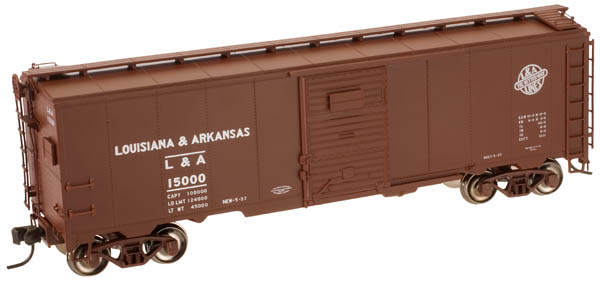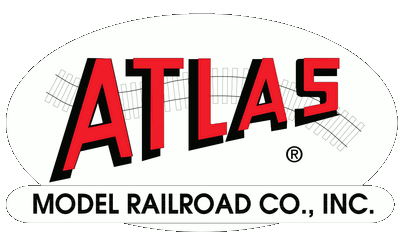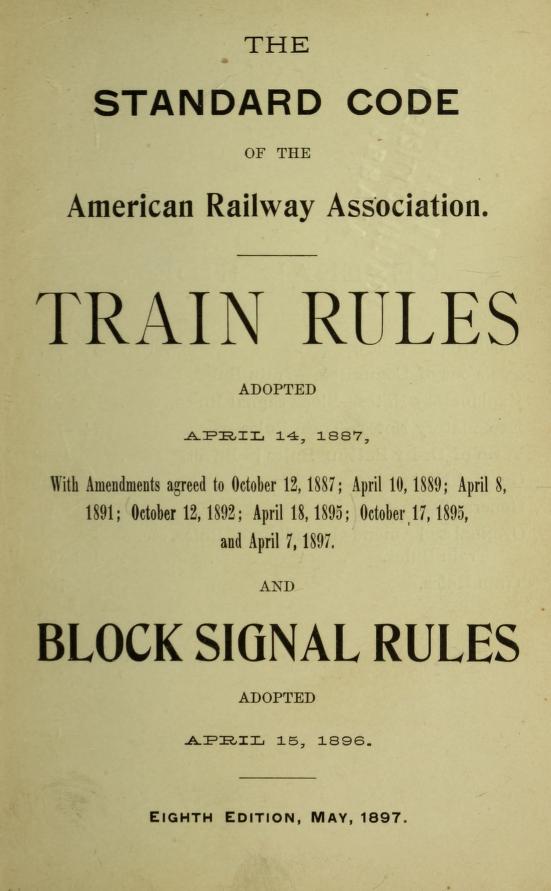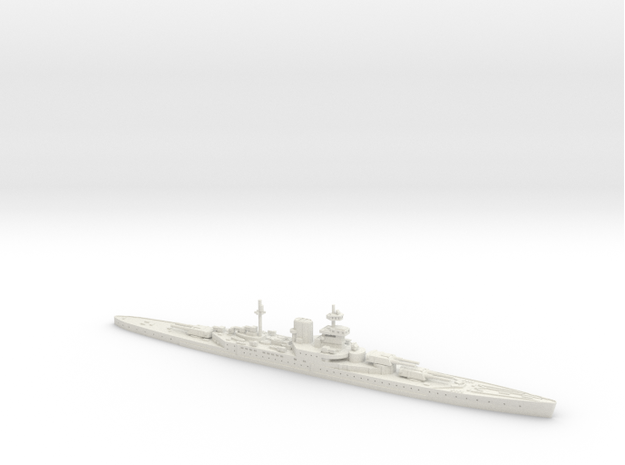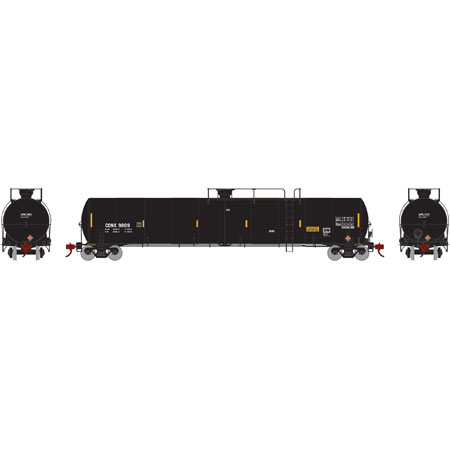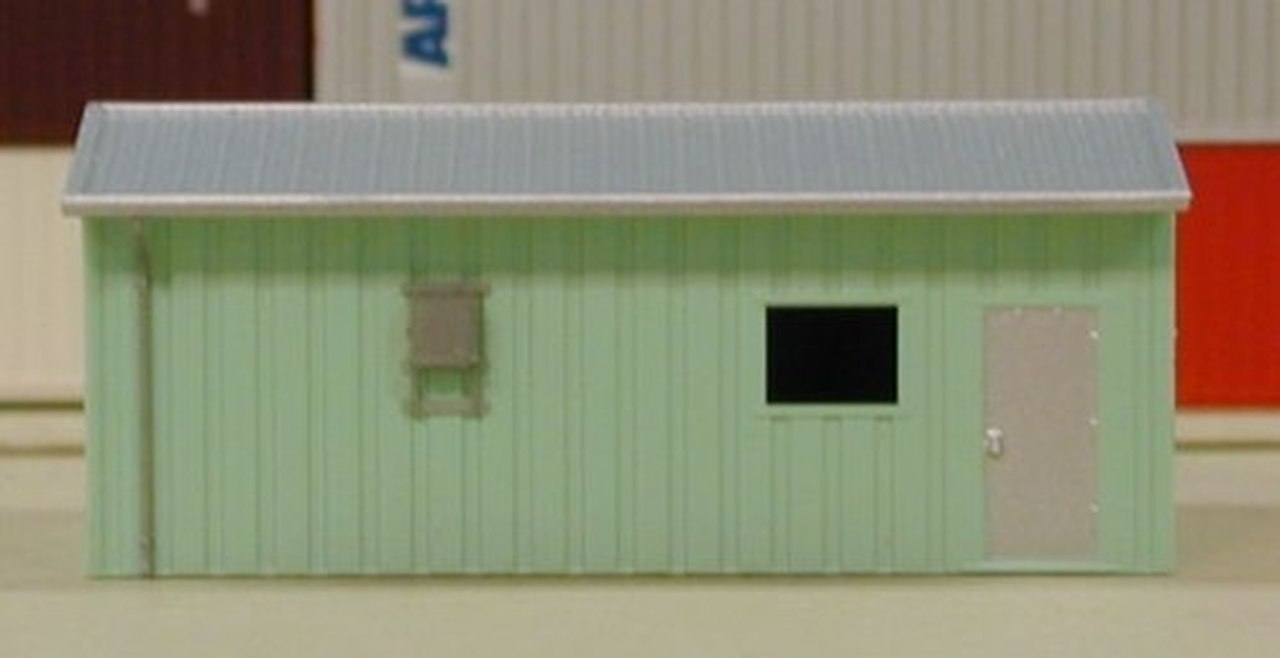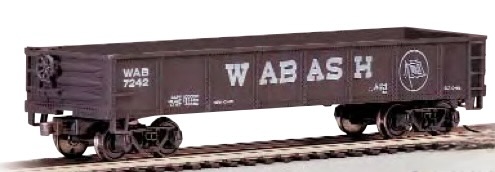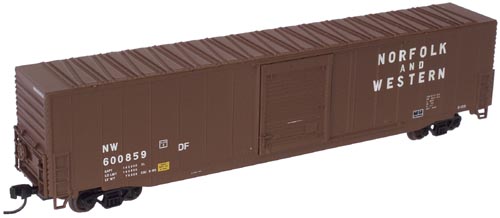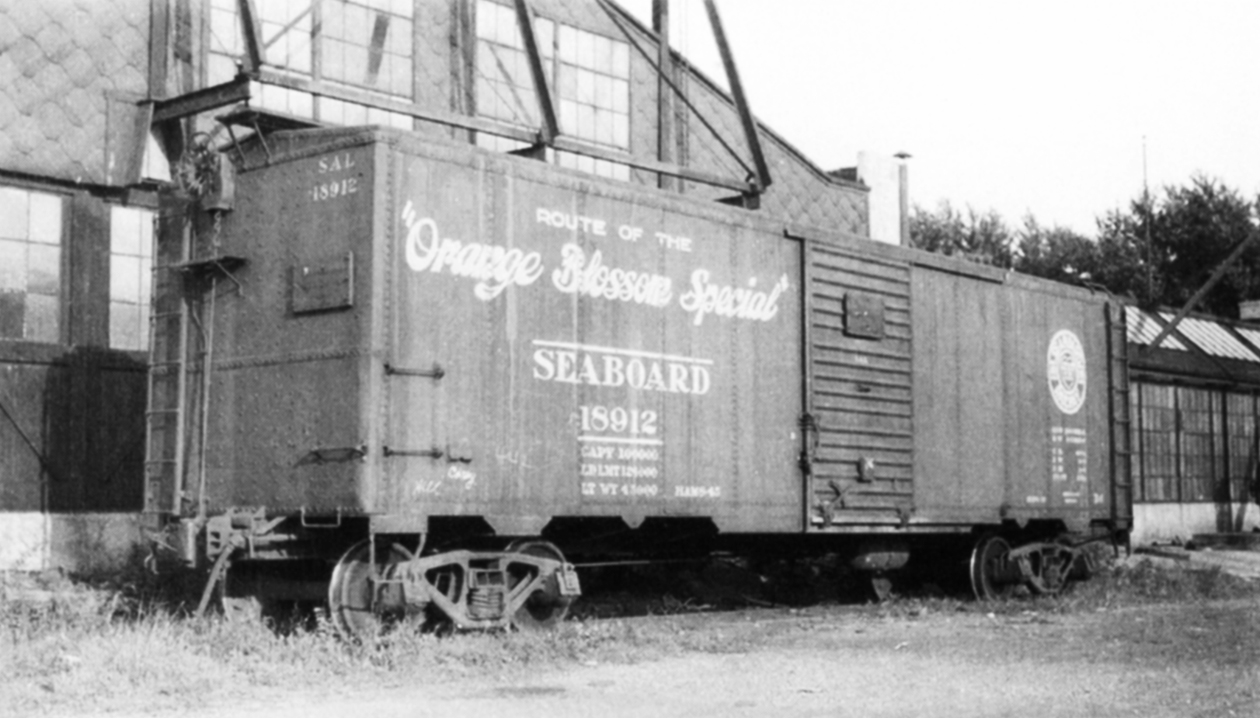Body Style Information: Features: Accurate painting and printing; Friction-bearing trucks; AccuMate® couplers.
Prototype Information: The first all-steel box car adopted as standard by the American Railway Association or ARA was a sound design, but unfortunately adopted near the depth of the Depression. Accordingly, not many railroads had the funds to buy this design, and orders only totaled 14,500 cars. But some of the railroads which did buy the 1932 car bought substantial numbers of them, and they are significant railroads: the Missouri Pacific (with subsidiaries, purchasing over 3000 cars) and the Seaboard (2000 cars). The Seaboard cars are especially interesting because the railroad chose to use the flat steel roof and ends reminiscent of the ARA’s proposed all-steel box car of 1923 (not adopted as standard), and widely used on the Pennsylvania X29 and Baltimore & Ohio M-26 classes.
In the early 1920's the Pennsylvania Railroad developed plans for a steel-sheathed box car and designated the design X-29. Production of this design began in 1924 and lasted into 1934. During this time period almost 30,000 Pennsylvania X-29 cars were built. Not all X-29's were the same. Their parts components varied from the original cars almost immediately. Variations included: frame components, brake systems, side sheathing, ends and doors just to mention the major changes. The 1924 X-29 was produced with the split K-brake or AB brake (added later), flat ends and side sheathing that has the 2nd to last panel from each end of the car overlapping its adjacent panels.
The ARA / X-29 box cars were noticeably shorter in height (8'-7" inside height) than later cars. .
There are many photographs showing X-29's lasting into Penn Central maintenance of way service.
More on PRR X-29 on this web site.
In the early 1920's the Pennsylvania Railroad developed plans for a steel-sheathed box car and designated the design X-29. Production of this design began in 1924 and lasted into 1934. During this time period almost 30,000 Pennsylvania X-29 cars were built. Not all X-29's were the same. Their parts components varied from the original cars almost immediately. Variations included: frame components, brake systems, side sheathing, ends and doors just to mention the major changes. The 1924 X-29 was produced with the split K-brake or AB brake (added later), flat ends and side sheathing that has the 2nd to last panel from each end of the car overlapping its adjacent panels.
The ARA / X-29 box cars were noticeably shorter in height (8'-7" inside height) than later cars. .
There are many photographs showing X-29's lasting into Penn Central maintenance of way service.
More on PRR X-29 on this web site.
Road/Company Information: The Louisiana and Arkansas Railway (reporting mark LA) was a railroad that operated in the states of Arkansas, Louisiana, and Texas. The railroad's main line extended 332 miles, from Hope, Arkansas to Shreveport and New Orleans. Branch lines served Vidalia, Louisiana (opposite Natchez, Mississippi), and Dallas, Texas.
The Louisiana and Arkansas Railroad was incorporated in Arkansas in 1898 for the purpose of acquiring former logging railroad properties in Arkansas and Louisiana. The railroad was constructed and initially operated under the leadership of William Buchanan, a prosperous timberman with extensive investments in southwest Arkansas and northwest Louisiana. Buchanan's partners were Harvey C. Couch and William Edenborn. Buchanan's primary company, Bodcaw Lumber Company, was headquartered in Stamps, Arkansas, and that city also served as headquarters of the L&A until the late 1920s. It was reorganized in 1902 as the Louisiana and Arkansas Railway.
During the late 1920s, a group of investors led by Harvey Couch began acquiring Louisiana & Arkansas stock. These investors owned electric and telephone utilities in Arkansas and Louisiana and believed that railroad ownership in their service area would also be profitable. When control of the L&A was thus secured on January 16, 1928, a new company was chartered in Delaware in 1928 to acquire the former Louisiana and Arkansas Railway Company and to acquire and lease the Louisiana Railway and Navigation Company. Louisiana Railway & Navigation operated a marginally profitable railroad between New Orleans, Shreveport and Dallas. The L&A inaugurated a new premier passenger train, The Shreveporter, on December 30, 1928, operating between Shreveport and Hope, Arkansas. This train carried a through Pullman sleeping car between Shreveport and St. Louis, Missouri, in conjunction with Missouri Pacific Railroad. A second named passenger train, The Hustler, was added to provide overnight service between Shreveport and New Orleans, beginning on July 2, 1932. 1930s
The Harvey Couch interests began purchasing stock of the Kansas City Southern Railway (KCS) in 1937. After gaining control of the KCS in 1939, a decision was made to merge the two properties. Kansas City Southern was the surviving corporation, with the Louisiana & Arkansas as a KCS subsidiary, but the KCS president and the controlling stockholders were all from the L&A. This merger created "single line" railroad freight service between Kansas City and New Orleans, and on September 2, 1940, a new KCS-L&A diesel powered streamliner, the Southern Belle, was inaugurated to connect the two cities.
In 1992, Kansas City Southern dissolved the subsidiary Louisiana & Arkansas Railway, although the former L&A route continues to be a major component of the Kansas City Southern.
The Louisiana and Arkansas Railroad was incorporated in Arkansas in 1898 for the purpose of acquiring former logging railroad properties in Arkansas and Louisiana. The railroad was constructed and initially operated under the leadership of William Buchanan, a prosperous timberman with extensive investments in southwest Arkansas and northwest Louisiana. Buchanan's partners were Harvey C. Couch and William Edenborn. Buchanan's primary company, Bodcaw Lumber Company, was headquartered in Stamps, Arkansas, and that city also served as headquarters of the L&A until the late 1920s. It was reorganized in 1902 as the Louisiana and Arkansas Railway.
During the late 1920s, a group of investors led by Harvey Couch began acquiring Louisiana & Arkansas stock. These investors owned electric and telephone utilities in Arkansas and Louisiana and believed that railroad ownership in their service area would also be profitable. When control of the L&A was thus secured on January 16, 1928, a new company was chartered in Delaware in 1928 to acquire the former Louisiana and Arkansas Railway Company and to acquire and lease the Louisiana Railway and Navigation Company. Louisiana Railway & Navigation operated a marginally profitable railroad between New Orleans, Shreveport and Dallas. The L&A inaugurated a new premier passenger train, The Shreveporter, on December 30, 1928, operating between Shreveport and Hope, Arkansas. This train carried a through Pullman sleeping car between Shreveport and St. Louis, Missouri, in conjunction with Missouri Pacific Railroad. A second named passenger train, The Hustler, was added to provide overnight service between Shreveport and New Orleans, beginning on July 2, 1932. 1930s
The Harvey Couch interests began purchasing stock of the Kansas City Southern Railway (KCS) in 1937. After gaining control of the KCS in 1939, a decision was made to merge the two properties. Kansas City Southern was the surviving corporation, with the Louisiana & Arkansas as a KCS subsidiary, but the KCS president and the controlling stockholders were all from the L&A. This merger created "single line" railroad freight service between Kansas City and New Orleans, and on September 2, 1940, a new KCS-L&A diesel powered streamliner, the Southern Belle, was inaugurated to connect the two cities.
In 1992, Kansas City Southern dissolved the subsidiary Louisiana & Arkansas Railway, although the former L&A route continues to be a major component of the Kansas City Southern.
Brand/Importer Information: In 1924 Stephan Schaffan, Sr. founded the Atlas Tool Company in Newark, New Jersey. In 1933 his son, Stephan Schaffan, Jr., came to work for his father at the age of sixteen. Steve Jr. built model airplanes as a hobby and frequented a local hobby shop. Being an enterprising young man, he would often ask the owner if there was anything he could do to earn some extra spending money. Tired of listening to his requests, the hobby-store owner threw some model railroad track parts his way and said, "Here, see if you can improve on this".
Atlas has made a ton of wonderful products throughout the years and we often get questions one whether we have run a certain road name on a particular model. It should be noted that Atlas locomotives and rolling stock are greatly appreciated for their superior operating and running characteristics. Atlas products are also well known for their outstanding collectability not only due to their superior prototypical workmanship, details and decoration, but because there are relatively so few of them made. Each and every production run has been carefully built to market demand, meaning almost every piece in any given run is sold out by Atlas on arrival or shortly thereafter, thus creating a built in collectors market.
Atlas has made a ton of wonderful products throughout the years and we often get questions one whether we have run a certain road name on a particular model. It should be noted that Atlas locomotives and rolling stock are greatly appreciated for their superior operating and running characteristics. Atlas products are also well known for their outstanding collectability not only due to their superior prototypical workmanship, details and decoration, but because there are relatively so few of them made. Each and every production run has been carefully built to market demand, meaning almost every piece in any given run is sold out by Atlas on arrival or shortly thereafter, thus creating a built in collectors market.
Item created by: devsummers428 on 2019-12-10 15:44:18. Last edited by devsummers428 on 2020-05-07 00:00:00
If you see errors or missing data in this entry, please feel free to log in and edit it. Anyone with a Gmail account can log in instantly.
If you see errors or missing data in this entry, please feel free to log in and edit it. Anyone with a Gmail account can log in instantly.


